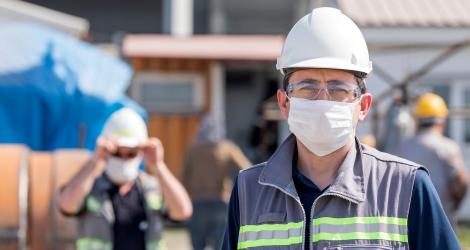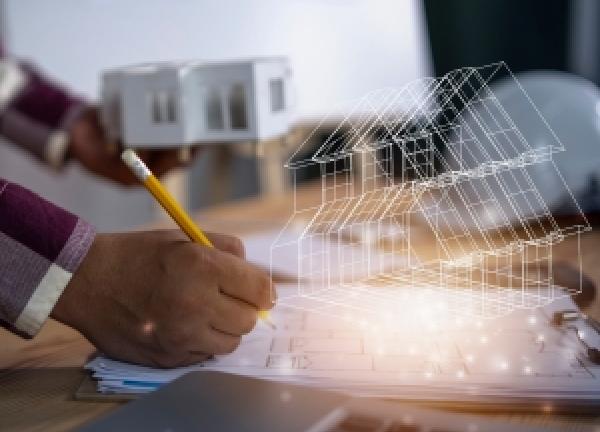Health safety: the new challenge for worksites
The Covid-19 crisis has led construction companies to reorganize their procedures for the long term: health safety is now a priority on every construction worksite. This major challenge is now accelerating the transformation of the industry.

The health crisis is driving a profound transformation in worksite procedures with the crucial aim of protecting the health of everyone. By turning our lives upside down, could the Covid-19 pandemic also be shaping the construction worksite of tomorrow?
A crisis is also an opportunity to reinvent ourselves for the better. And the one that has shaken our planet in recent months is no exception: by tearing up the rulebook, it gives us the opportunity to rethink our responses. Especially in terms of construction industry safety.
So could 2020 be the start of the journey to 100% safe worksites? The many initiatives that have emerged recently certainly point in that direction. It began with the publication of a guide to good practices by the French Organization for Prevention of Occupational Hazards in the Construction Industry (OPPBTP). Regularly updated, this manual is very much a health roadmap to help companies get back to work safely. Its ultimate aim is to keep everyone in the worksite safe and protect their health at a time of pandemic.
And that’s the challenge of dealing with Covid-19 right there: how do you orchestrate a construction worksite where so many trades are working side-by-side, while respecting social distancing and meeting a tight schedule?
Because a construction worksite is like a small planet around which construction companies orbit, intersect and follow each another in a skillfully choreographed ballet. The one-man band known as the Health & Safety Coordinator has the overview required to ensure the safety of people and the worksite, working closely with the project manager. Together, they manage an enormous diversity of tasks, multiple interventions and the parallel working of trades and subcontractors, because everyone agrees that properly controlled parallel working saves precious time in terms of scheduling and deliveries.
The marriage between Covid and Safety

The virus has effectively torn up the rulebook, demanding new working methods that deliver an effective response to a previously unthinkable challenge: the risk posed by pandemic. It is true that the construction industry is all too familiar with uncompromising protocols and drastic safety measures, but they pale into insignificance compared with the Covid-19 crisis, which is pushing health protection challenges to the absolute limit.
Temperature measurement, alcohol-based hand sanitizer gel, provision of masks, etc.: the regulations governing worksite access are extremely precise and very restrictive. So we now have to deal with personal protective measures, in addition to the already long list of safety protocols. This new marriage between Covid-19 and Safety requires us to rethink every aspect of life on a construction worksite, and to ensure that everyone can learn the new normal, many worksites now have someone new working alongside the Health & Safety Coordinator: the Covid-19 representative, who has responsibility for ensuring that all these measures are properly and fully respected.
Reorganizing worksite compounds

The first problem to be solved is how to maintain social distancing when everyone knows that working closely with others is important on any worksite. The largest of these issues - human traffic management - has been addressed by one-way systems to limit interaction. Worksite compounds have also been reorganized. Changes include lunch rotas and a schedule for using restrooms posted in real time on bulletin boards. Elsewhere, parallel working has become rather like musical chairs, in which the plumber follows on behind the electrician, who previously followed behind the plasterer... So instead of overlapping, individual tasks follow sequentially, allowing work to progress without compromising health safety.
BIM and Lean to the rescue
And to do all of this even more efficiently, site managers can now rely on BIM and Lean Management. BIM? Building Information Modeling creates a 3D digital model that is a virtual representation of the entire building or structure. Lean Construction takes a different approach to the processes involved in a construction worksite by eliminating all the waste and additional work created by unsuitable processes. These two tools already deliver an effective response to the quality and performance criteria of construction worksites, but they can also be used to improve health, safety and accident prevention. From flow modeling through control of parallel working and holding virtual meetings to scheduling, Lean and BIM have the potential to continuously improve the way work on construction worksites is organized.
While one provides the capability of demarcating materials locations and team work zones as closely as possible to where they are actually needed (in so-called Lean micro-zones), the other provides control of parallel working (the fourth dimension of BIM). And there are further approaches that could also make life easier on construction worksites; solutions such as custom prefabrication to save time on assembly.
But one thing seems certain: Covid-19 has effectively amplified the transition of the construction industry towards a more agile organizational model. There can be no doubt that the construction worksites of tomorrow will be efficient, sustainable, digital... and 100% safe!
Credits : rawf8/Shutterstock; Funtay/Shutterstock; richardjohnson/Shutterstock
The latest stories
All stories
View more


